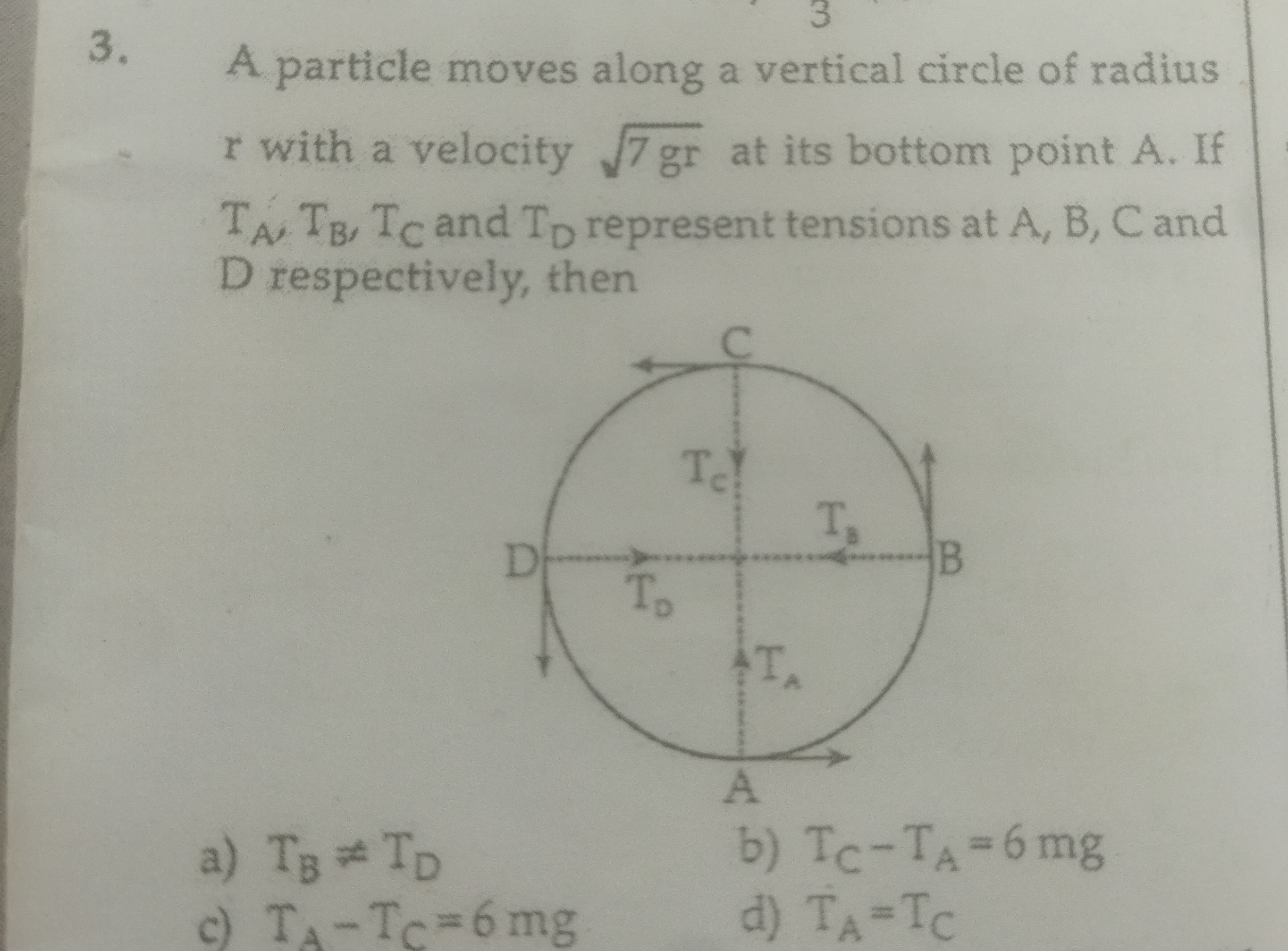Question
Question: A particle moves along a vertical circle of radius r with a velocity $\sqrt{7gr}$ at its bottom poin...
A particle moves along a vertical circle of radius r with a velocity 7gr at its bottom point A. If TA,TB,TC and TD represent tensions at A, B, C and D respectively, then

A
TB=TD
B
TC−TA=6mg
C
TA−TC=6mg
D
TA=TC
Answer
(c) TA−TC=6mg
Explanation
Solution
-
Determine speeds using energy conservation:
-
At A (bottom), given:
vA=7gr. -
Let A be zero potential energy. Then at:
- B (rightmost, height = r): 21mvB2=21mvA2−mgr⇒vB2=7gr−2gr=5gr.
- C (top, height = 2r): vC2=7gr−4gr=3gr.
- D (leftmost, height = r): vD2=5gr(same as B).
-
-
Apply radial force equations (centripetal force requirement):
- At A (bottom):
Here tension TA acts upward, weight mg acts downward. The net upward force provides centripetal acceleration: TA−mg=rmvA2=rm(7gr)=7mg⇒TA=8mg. - At B (rightmost):
At B, the radius is horizontal. Tension TB provides the entire centripetal force since mg (vertical) is perpendicular to the radial direction: TB=rmvB2=5mg. - At C (top):
Both tension TC and weight mg act downward (towards the center): TC+mg=rmvC2=3mg⇒TC=2mg. - At D (leftmost):
Similar to B (only tension provides centripetal force): TD=rmvD2=5mg.
- At A (bottom):
-
Compare tensions for the options:
- (a) TB=TD: Actually, TB=TD=5mg — False.
- (b) TC−TA=6mg: TC−TA=2mg−8mg=−6mg — False.
- (c) TA−TC=6mg: 8mg−2mg=6mg — True.
- (d) TA=TC: 8mg=2mg — False.
